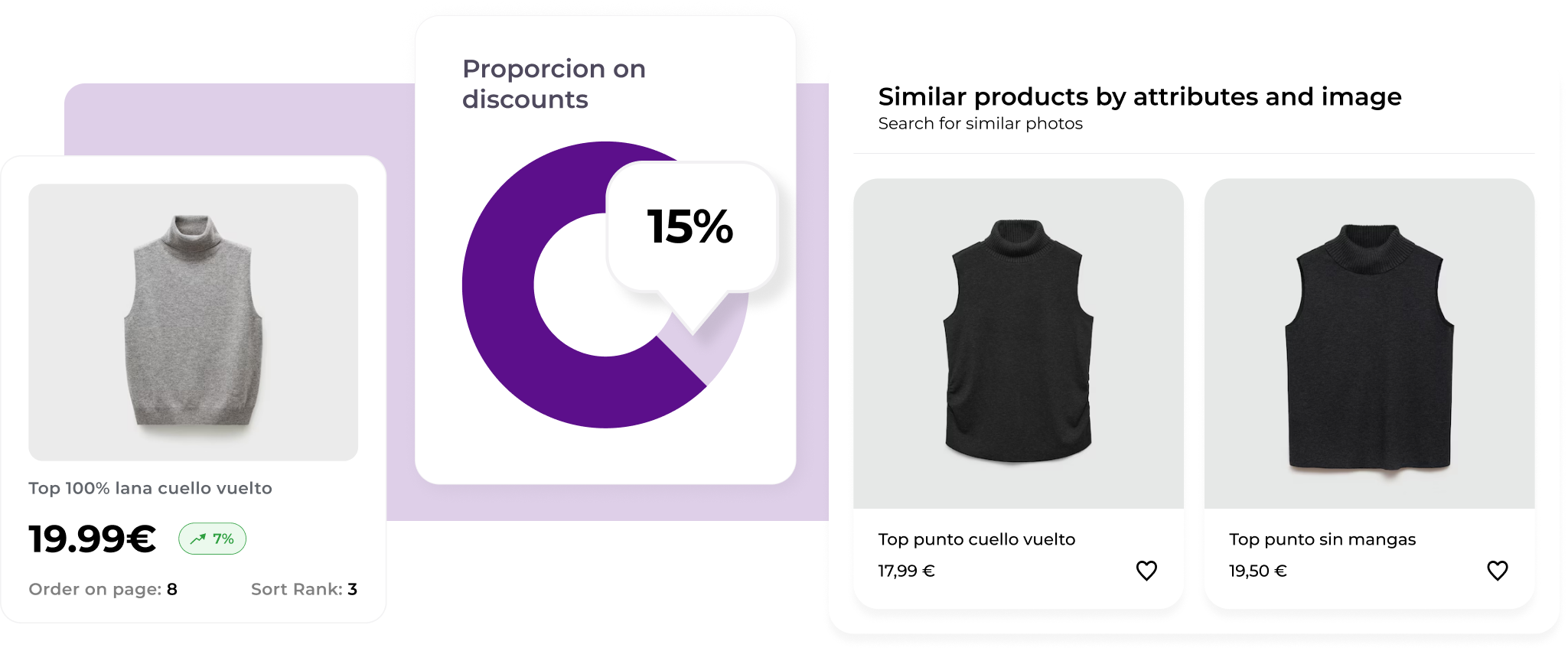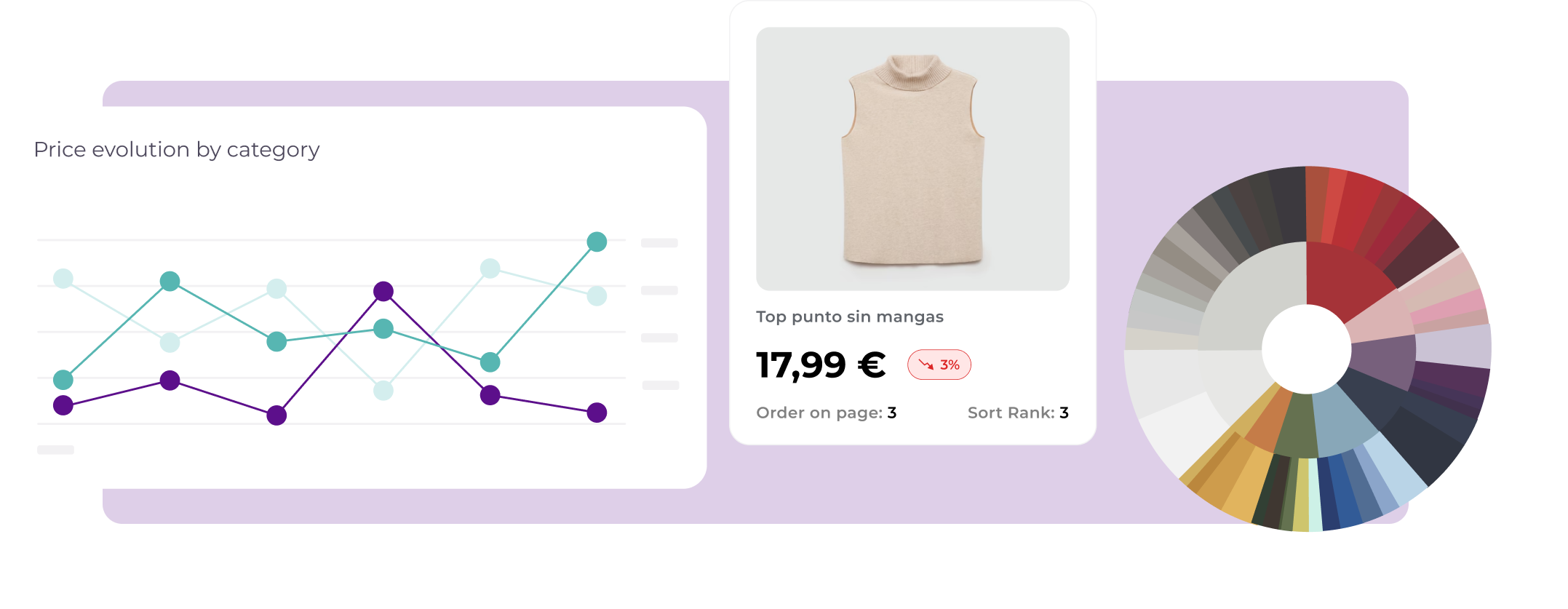The Value of Product Insights and How to Integrate Them with Consumer Insights
In a business environment where the right decisions make the difference between success and failure, perfecting products and understanding consumers is essential to thrive. Companies that successfully interpret user needs and translate those interpretations into effective products have a clear competitive advantage. However, to reach that point, it’s not enough to have data; you need to understand it, transform it into concrete actions and apply it strategically. This is where Product Insights and Consumer Insights play a crucial role.
While both types of information are valuable on their own, their true power lies in combining them. Together, they offer a holistic view that can help companies design better products and deliver optimized user experiences.
In this article, we will explore in detail what Product Insights are, the main types that exist and how, by integrating them with Consumer Insights, more effective and tangible results can be achieved in business strategies.
What are Product Insights?
Product Insights are actionable data obtained through analysis of a product’s performance, the way users interact with it and its behaviour in the market. These insights are essential for understanding how a product is being used, what aspects are working well and where areas for improvement lie. In other words, they provide a window into the consumer’s mind (How does it work? What does it feel like?) when the product is in their hands and they are using it.
Collecting Product Insights involves using various tools and methods such as data analysis, usability testing, satisfaction surveys and tracking key performance metrics. This data can be divided into two categories:
- Quantitative: Any data that can be measured statistically. They may relate to technical product features or malfunctions, as well as being part of pre-existing data, prior to the product (for example, the customer retention ratio of the business).
- Qualitative: These are the factors that, initially, seem more arbitrary as they cannot be measured with a scale. They are typically extracted from consumer surveys or customer reviews. This data provides details that cannot be extracted from quantitative data. For example, if someone says they don’t like your product, this data would be within the quantitative scale (because the answer is a simple “yes” or “no”). But if they explain why they don’t like it, their response will contain qualitative insights about the product.
In short, Product Insights provide a detailed and practical perspective on how to improve the product and increase user satisfaction.

The 4 Types of Product Insights
To get the most out of Product Insights, it is essential to understand that they are not all the same. There are four main categories that help organize and prioritize the information obtained:
Behavioural insights
These relate to how users interact with the product. This type of information reveals usage patterns, identifying which features are used most often, how users navigate within the product and what friction points they encounter. By understanding user behaviour, companies can adjust product design to make it more intuitive, improve the user experience and reduce barriers to use.
For example, if a specific product function is not being used as expected, behavioural insights can pinpoint the cause: perhaps it is because users cannot find it easily or don’t understand its use.
Behavioural insights can be extracted from user surveys, app or web behaviour analytics, as well as from interactions with customer support.
Feature insights
Feature insights focus on analyzing the specific properties and functions that the product offers. For example, they indicate how many units it comprises, its dimensions, nutritional values (if we are talking about food), the packaging…
These insights allow you to identify whether the product’s features are aligned with consumer needs, if they meet quality standards and, in addition, if they are aligned with market trends. They provide valuable information to adjust or refine features, ensuring that the product remains competitive, innovative and relevant, without relying solely on user behavior.
These are very powerful insights for analyzing market and competitor products by typology and discovering what trends there are in the assortments. They can also be used to analyze purchasing patterns based on the characteristics of each product.
Market insights
Provide information on how the product is positioned in the market compared to the competition. This includes data on market share, consumer preferences and emerging trends in the industry. They allow companies to adjust their commercial strategy and ensure they are offering a relevant and competitive product.
They can be extracted from sources such as market reports, competitor analysis or media articles. This data is crucial for identifying growth opportunities, detecting new consumer needs and positioning the product in untapped niches.
Operational insights
Operational insights are related to a company’s internal processes and its efficiency in producing and distributing a product. This includes information on the supply chain, logistics and production costs. These insights help identify potential bottlenecks or inefficiencies in operations that may be affecting the product’s availability or quality.
Sources for obtaining operational insights may include internal reports, employee feedback or external audits. Improving operational efficiency from this data can allow companies to reduce costs, optimize delivery times and improve the quality of the final product.
By understanding these four types of Product Insights, and applying them together, a holistic view of how users interact with our product can be achieved. This will help you make informed and optimised decisions to improve it.
What do you Get Out of Product Insights?
The analysis of Product Insights provides a multitude of benefits. First, it helps to create products that are more closely aligned with the needs and expectations of users. By knowing how they interact with the product, it is possible to make adjustments that improve their experience and increase their satisfaction.
It also allows companies to identify and correct technical problems, preventing users from encountering performance or usability issues that could lead them to abandon the product. Finally, by knowing the competitive and operational environment, companies can make more informed decisions about the future of the product. And review emerging trends to extract ideas for creating new products.
Why are they Important for Your Company?
Product Insights are vital because they offer a detailed view of how a product behaves in real-world usage conditions. Without this information, companies are operating in the dark, not knowing whether the product they have developed actually meets user expectations. Implementing Product Insights systematically allows companies to reduce the risks associated with design errors or misunderstandings about what users actually need.
In addition, they allow for quick and continuous adjustments, which is essential in a dynamic business environment. Companies that rely on this information to improve their products often gain a competitive advantage by offering products that follow trends and are more efficient, easy to use and appealing to consumers.
Today’s consumers have millions of different options to choose from. If a product doesn’t meet their needs, they will likely choose another option. Product Managers will need to closely monitor the experience consumers have with their products (even with competitor products) to avoid losing them.
To achieve this, they will need to use the feedback and the amount of data that users generate. And thanks to this, they will be able to build solutions that attract new users and retain current ones.

What are Consumer Insights?
Consumer Insights, on the other hand, focus on a deep understanding of the desires, needs and behaviours of consumers. They also include the demographic makeup of your target audience. Unlike Product Insights, which focus on the product, Consumer Insights are geared towards the people who use or could use the product.
They can be incredibly generic (discovering that a certain type of person buys a certain type of product) to very specific (knowing exactly that people in postcode X never buy in the postcode next door).
These insights come from market research, surveys, interviews and analysis of buying behaviours. They can be direct or indirect, solicited or unsolicited and quantitative or qualitative. They provide a detailed view of the factors that influence consumer purchase decisions, such as their emotional motivations, their expectations and the values they seek in a brand or product.
By understanding consumers at a deeper level, companies can create more effective marketing messages, develop products that truly solve important problems and build stronger and more lasting relationships with their customers.
Combining Product Insights with Consumer Insights to Achieve Success
The key to maximizing the impact of Product Insights and Consumer Insights is their integration. Although each offers a different perspective, together they provide a comprehensive understanding of both the product and the user.
If Product Insights show that a product feature is not being used as expected and, at the same time, Consumer Insights reveal that users were not aware of its existence or didn’t understand its value, this indicates a mismatch in communication or design. By adding market insights, which offer a view of how the product is positioned against the competition and current trends, companies can get a complete picture of the problems to be solved. This combination of sources allows for precise detection of any area for improvement and for addressing it effectively.
Similarly, Consumer Insights can highlight opportunities to develop new features or products. If consumers express an unmet need, Product Insights can guide the design of solutions that meet those expectations, while market insights provide context on emerging trends and competitive movements. In this way, companies can develop innovations that are better aligned with market demands.
In an increasingly competitive business environment, the success of a product depends on the ability to understand both its performance and consumer expectations. The integration of Product Insights and Consumer Insights provides a broader strategic view, allowing optimization of both the product and the user experience. Those companies that manage to merge both types of information will be in a better position to innovate, adapt and stay relevant in the market.



